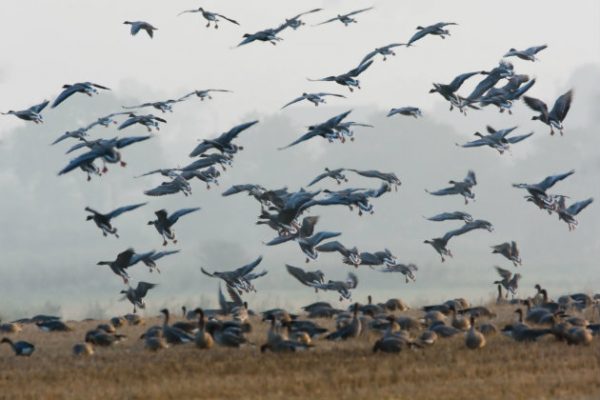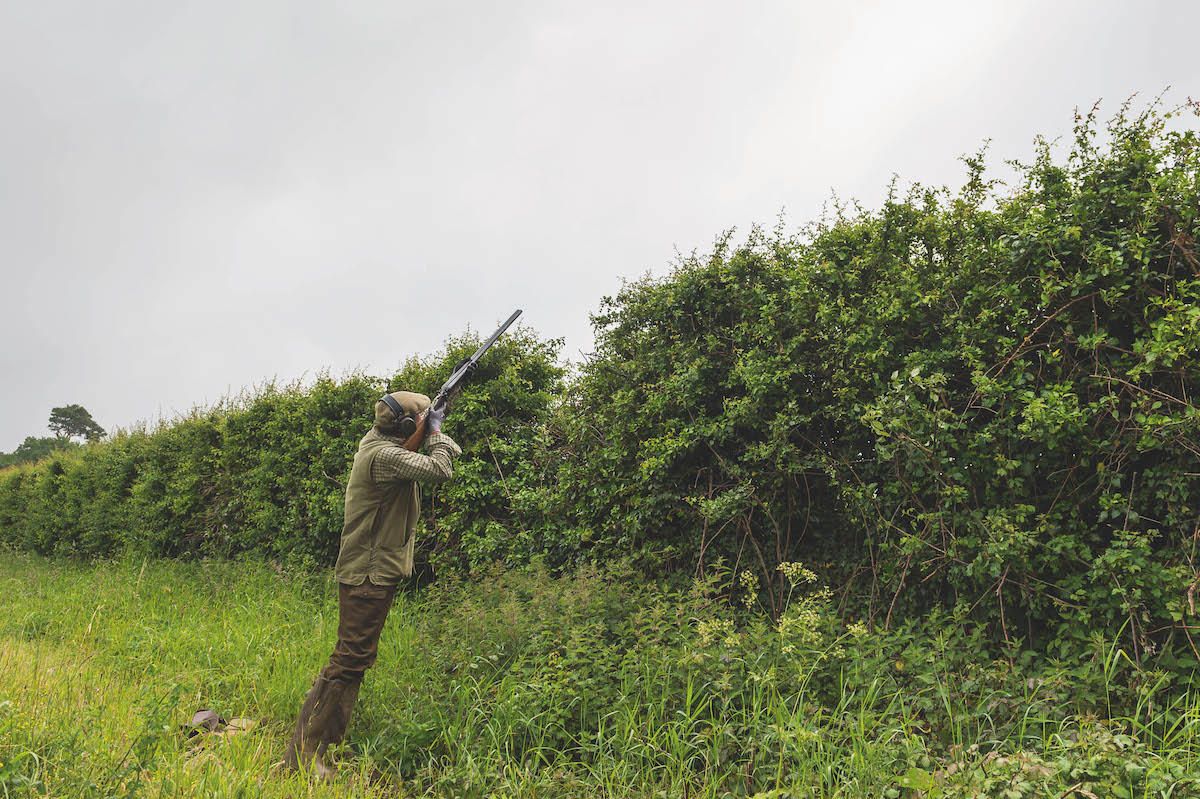Why are birds with rising numbers on the amber list of conservation concern?
Only a total lack of common sense could place birds that have rising population numbers on an amber list of conservation concern

Pink footed geese coming into feed
Did you know that the pink-footed goose falls within the ‘amber’ category in the traffic light listing of the UK Birds of Conservation Concern (BoCC) report? This is despite the fact that their numbers have risen for many decades — there are now about 500,000 pinkfeet wintering in the UK each season. There were only about 30,000 in the 1930s, when Peter Scott, who subsequently founded what is now the Wildfowl and Wetlands Trust, was blasting them with his trusty 12-bore.
This species is one of the few that has done well out of modern agriculture, notably the advent of winter-sown cereal crops, and is regarded as an agricultural pest in some areas. It is officially classed as ‘of least conservation concern’ internationally, yet, in its stonghold, the UK, the BoCC has it amber-listed.
Pick ‘n’ mix
It turns out that this is a perverse tribute to a UK conservation success story. Our wintering population of predominantly Icelandic-bred pinks has done so well that it is now much more numerous than the Svalbard breeding population of the species that winters in the low countries. And because our UK wintering birds now form such a substantial proportion of the world total, this triggers an amber listing in BoCC. Weird, eh?
The traffic light system for the conservation status of British birds was invented in 1996 by the usual suspects and is revised every six years. As far as I can tell, species are allocated to each traffic light category by a sort of pick ‘n’ mix process, from a number of criteria.
Now, the entire rationale for any traffic light report, as widely used in industry for risk assessment and performance measurement, is to provide clarity. So, you might be forgiven for thinking that an amber-listed species was in trouble, rather than abounding in record numbers. Perhaps they should add a pink traffic light?
In the Orwellian mindset of the conservation blob, the traffic light system must be made to sacrifice common sense on the altar of protectionism. What is the purpose of the BoCC report? Cynics might say it provides a useful vehicle for fundraising — the relevant RSPB web page has at least two ‘donate’ tabs — but it can actually act against practical conservation.
Look at gulls. BASC council member Ian Coghill has exposed the absurdities of the traffic light system in a detailed paper about the status of gulls in the UK. He highlights the problems gulls may pose for genuinely endangered species. For abstruse technical reasons, the herring gull is red-listed in the UK, despite being numerous. Yet the stone curlew, with only 350 breeding pairs, is only amber-listed. The result, as Ian points out, is: “If one of the half-million red-listed herring gulls finds one of the few hundred stone curlew chicks to hatch in the UK this year, no one can legally intervene to save the chick.”
He goes on to observe: “When any system produces anomalies as patently ridiculous as that, it needs urgent review and reform.”








